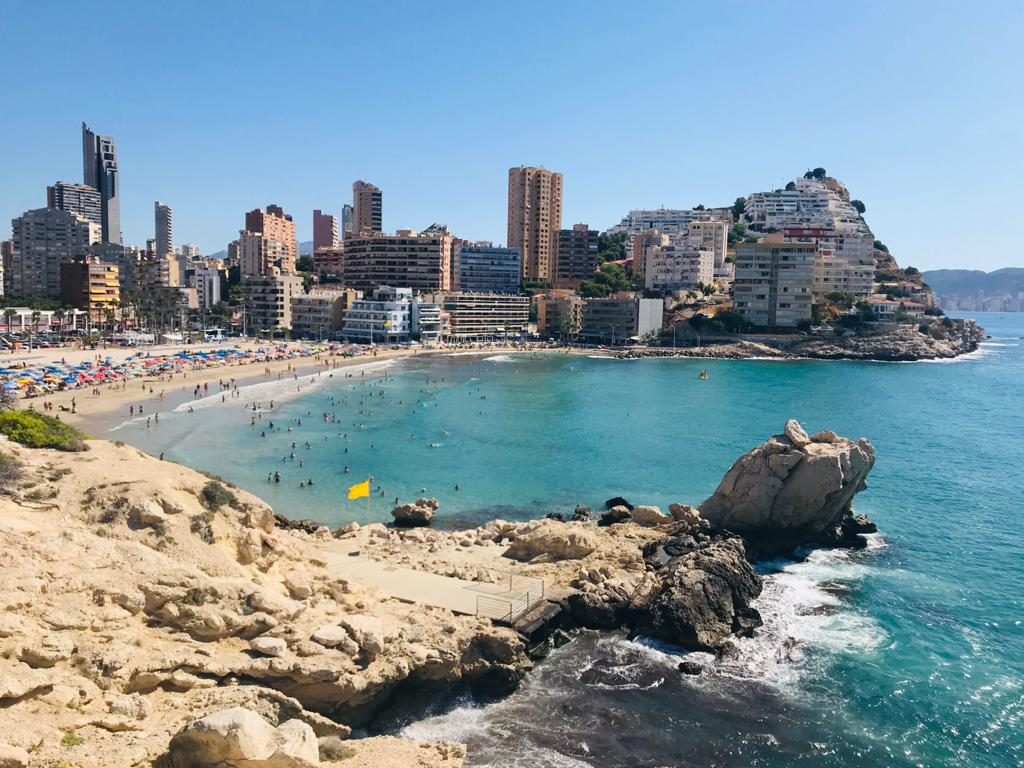
"The beauty of Puig Campana lies in its grandeur and the peace it transmits"
"The beauty of Puig Campana lies in its grandeur and the peace it transmits"
The love affair with Puig Campana did not come to Manuel Mayor Rabasa in his youth. It was at the age of 33 when he went up for the first time, casually with a friend, and was so impressed by its beauty that since then he visits it every week. In these three decades he has had enough time to discover the secrets that the mountain holds. To do this, he has needed a lot of patience, but the illusion of finding something new, something different, has been so great that it has led him to repeat his pilgrimage in an infinity way. At first he did it in a more daring way, even, at times, recklessly, and, as the year went by, with greater temperance.
In his exhibition, which could be seen at the Museu de Finestrat throughout the month of January, his passion or orchids was clear. For Manuel, they are, without a doubt, the most beautiful, especially the speculum and the blue mirror, and they are also the most original flowers. In the province of Alicante, 35 classes have been counted, and Puig Campana there are 11, although a couple of them have already disappeared as result of climate change. However, he says, the rosella and the poppy are the most flirtatious, the ones that best allow themselves to be portrayed by the camera.
Medicinal plants deserve a separate chapter. Of the 400 plants he has catalogued, 200 are medicinal. He longs for the times when people lived in a more symbiotic way which nature, which was when Puig Campana provided, in addition to food, a cure for both humans and animals. When he tells it, you can see a mixture of nostalgia and regret in his face.
1.He has climbed Puig Campana every week for the past 30 years. What has the mountain passed on to you to make it such an important part of your life?
Relaxation, peace, disconnection. I have had a very hard job in the adoption department at the Provincial Home, with very tremendous cases, and the mountain gave me peace of mind. In addition, I like to go alone and feel that unique feeling of being in contact with nature. It is priceless to feel the breeze or the cold, especially in the winters of yesteryear.
2. How should I get to the mountains? Are you one of those who think that you have to go without disturbing, without being noticed?
Absolutely. The mountain is to be admired and protected. You have to be in it with great respect, not to raise your voice, not only for the plants, but for the animals thar live in ir, which are frightened. You have to go and contemplate it, silently.
3. Three decades is enough time to compare. Have you noticed that Puig Campana is suffering the consequences of climate change?
Yes, in fact, plants I photographed 15 years for are gone. It rains less and less, the summer last much longer at all this has an impact on the vegetation. Also, plants that grow at 300 meters can’t grow at 1000 meters. They need certain conditions. A plant that I have already given an expiration date. About two years, is the Corona del Rey because it requires humid ad cols areas to live, such as those on the north face of Puig Campana.
4. When would you set the tipping point?
In 2000. From this year I started to notice the changes.
5. Although you have nor practiced, you studied Geopraphy, what is landscape for a geograprher?
You have to learn to enjoy the landscape, to feel it, to relate to it. The inhabitants of Finestrat are very aware of the mountain we have and when we climb Puig Campana we enjoy it, we appreciate it, we get hooked. It is a spectacular mountain for all of us, that is, you see the town and suddenly you seen an impressive, immense mass, a spectacular mountain for all of us, that is, you see the town and suddenly you see an impressive, immense mass a huge stone with a brutal slope, shaped like a bell, which gives it a poetic touch. It is special, very special, regardless of the abundant flora it has. it is a part of the town and we must not forget that within the Puig Campana is where the aquifer we have is located, the one that provides us with water to drink, to cleanse, to irrigate, Now we don’t have those needs, but we have is located, the one that provides us with water to drink, to cleanse, to irrigate. Now we don’t ancestors went through many hardships, and the mountain provided them with food, tools, shelter and raw but for all that she did for our parents and grandparents. In the mountains there were almond trees, there were carob trees, olive trees, strawberry trees, fig trees, apple trees. There are hardly any left. In our society of affluence, we believe that nothing is necessary. Ip hope it’s true because I’m afraid with climate change there is no going back.
6. I Imagine that four you the Puig Campana is a beautiful mountain, but what is beauty when referring to a massif as imposing as the one that crowns Finestrat?
For me, beauty is its spectacularity and everything you can find in it. It’s hard for me to define the beauty of Puig Campana. I think it’s the whole, the grandeur of the stone with the peace it transmits to you, that tranquility so difficult to find in a world like today’s.













There are no comments